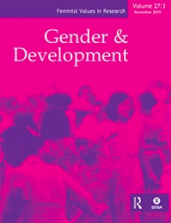Analysing care policies and practices in times of austerity and conflict: the case of the Occupied Palestinian Territory (OPT)

Overview
In fragile and conflict-affected contexts, the COVID-19 pandemic hit communities much harder than elsewhere by adding another layer of vulnerability to their already precarious circumstances. Around the world, many pandemic recovery plans were devoid of gender-sensitivity, such as lacking explicit recognition of, or introduction of, substantive steps, supporting women’s quest for improved care services. In the Occupied Palestinian Territory (OPT), where the pandemic coincided with other crises such as the occupation, an escalated military offensive (May 2021 in Gaza), heatwaves due to climate change, and a longstanding economic crisis, pandemic recovery is particularly challenging. This paper examines the channels through which Palestinian women’s multi-layered vulnerabilities continue to worsen despite the Palestinian Authority’s pandemic recovery measures. It does so by documenting the plethora of ways in which women’s wellbeing is hampered by critical factors such as informal modes of employment, patriarchal social norms, unpaid care responsibilities, and the longstanding absence of any social protections. The policy analysis reveals that there is widespread fragmentation in the design of pandemic recovery policies which attempt to address their highly complex and multi-layered challenges. Using the case of women in the OPT as an example, it proposes several policy recommendations to help address Palestinian women’s unique vulnerabilities even within their existing limitations.
Additional details
Author(s)
Publisher(s)
Editor(s)
DOI
10.1080/13552074.2022.2072020How to cite this resource
Citation styles vary so we recommend you check what is appropriate for your context. You may choose to cite Oxfam resources as follows:
Author(s)/Editor(s). (Year of publication). Title and sub-title. Place of publication: name of publisher. DOI (where available). URL
Our FAQs page has some examples of this approach.



